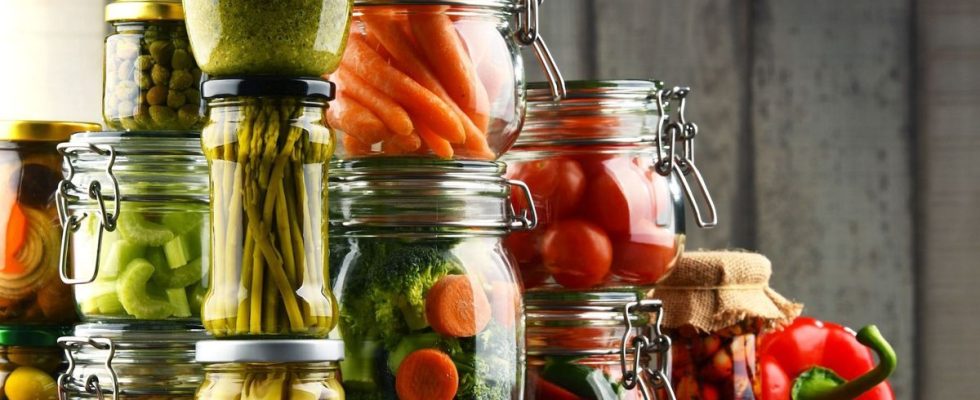Published on
Updated
Reading 2 min.
Following recent cases of botulism, caused by homemade canned sardines served in a Bordeaux restaurant, should we be afraid of making our own preparations? No, as long as you follow the recommendations, like those of Anne-Marie Desbiens, who nicknamed herself the Scientific Foodie. The Quebec chemist, specializing in the world of food, has just released a work entitled “How to preserve your food without poisoning your family”.
The autoclave for risk-free sterilization
This is what we call a sterilizer, or more technically an autoclave. You can find them in appliance stores, but also in kitchen stores. If the budget for one can be expensive – from a hundred euros to more than a thousand euros, the sterilizer is the best way to obtain jars that you can open without worrying of the possible presence of bacteria. “In a water bath, you cannot boil above 100°C. However, this is the limit to be exceeded to ensure that no bacteria develops“, explains the scientific foodie. And to specify that this recommendation applies even more to canned meats, seafood and vegetables.
Furthermore, you should keep in mind that the sterilization time differs depending on the type of food, generally being between 15 and 30 minutes. In his book “How to preserve without poisoning your family“, Anne-Marie Desbiens still provides advice regarding sterilization in a water bath for those who do not have an autoclave. It is therefore advisable to check that there is at least one inch of water at the bottom. top of the jars.
Prefer acidic preparations to concoct your jars
Tomatoes, pickles, ketchup, candied lemons… It’s better to opt for recipes that stand out for their acidity when choosing to make your own jars. Quite simply because this type of preparation keeps better, says Anne-Marie Desbiens. Furthermore, it is necessary to take into account how the food will react at the time of sterilization. For example, zucchini turns into puree when heated.
Never fill pots to the brim
By adding food to the top of the jar, it may not heat up sufficiently, and therefore be a potential health hazard. A recommendation that is all the more important as certain ingredients tend to swell during storage. It is therefore necessary to anticipate possible reactions. What’s more, by overfilling the cans, liquid could leak, which would prevent the seal from perfectly fulfilling its function: establishing a waterproof barrier between oxygen and the interior of the jar. Speaking of air, it is also important to mix the contents using a spatula after pouring it into a can heated in a bain-marie or in the dishwasher. The goal is to expel all the air bubbles before closing the jar.
Storage in a cool, dark place
It’s not all about making your own preserves. We must also take the precaution of keeping them in suitable conditions so as not to fear any risk at the time of opening when several months later, we decide to use these good sun-drenched garden tomatoes in the middle of winter. Besides, in this regard, homemade jars will keep for twelve months, no more. If your garage or pantry becomes a real furnace as soon as it gets hot, these are places to absolutely avoid storing your canned goods. The temperature should not exceed 30°C, otherwise there is a risk that thermophilic bacteria will develop. As for light, it degrades vitamins and even has the ability to change the taste of food.
How to preserve without poisoning your family
Anne-Marie Desbiens, editions La Presse, $29.95 (around 28 euros)
